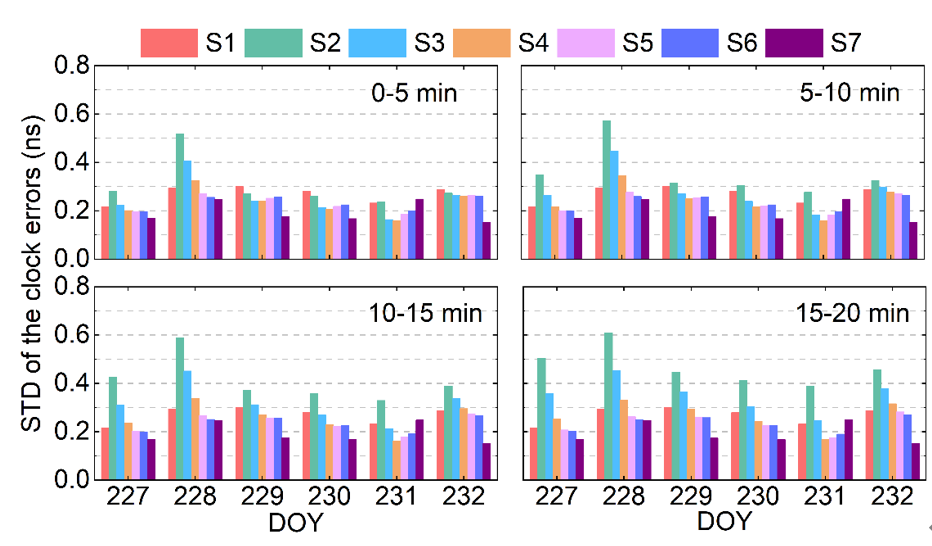Real-time LEO Satellite Clock Estimation Constraining Short-term Predicted Orbits
Recently, the research team of WANG Kan from the National Time Service Center(NTSC) of the Chinese Academy of Sciences(CAS), and the team of Prof. Ahmed El-Mowafy from Curtin University, Australia, have jointly proposed a new method to improve the real-time Low Earth Orbit (LEO) satellite clock precision.
The research was published in the SCI journal GPS Solutions on August 6, with the title: Real-time LEO satellite clock estimation with predicted LEO satellite orbits constrained.
Benefiting from the low altitude, fast speed and strong signal strength, LEO satellites can augment the traditional GNSS with improved convergence speed and precision in the positioning and timing services. The real-time LEO satellite clocks used by ground users are predicted clocks. Different from the GNSS satellite clocks, LEO satellite clock estimates contain various systematic effects that complicate their mid- to long-term prediction. As such, Kalman-filter-based clock estimation with ultra-short-term prediction is often utilized to guarantee good real-time clock precision, hence enabling high-precision real-time positioning and timing.
To improve the Kalman-filter-based real-time LEO satellite clock precision, the above-mentioned research teams of the NTSC, CAS and Curtin University, Australia started an international collaboration. Through introducing high-accuracy short-term predicted orbits based on independent batch least-squares reduced-dynamic precise orbit determination, and with proper constraints added to the introduced orbits, the LEO satellite clock and orbital parameters are de-correlated, realizing an improvement in the LEO satellite clock precision.
The research used the LEO satellite Sentinel-3B at about 800 km, and showed the clock precision after differently constraining the predicted orbits at different prediction time windows. The orbital User Range Error (URE) of the predicted orbits at the four prediction time windows in Figure 1 increases from about 3 to 4.5 cm. The results show that adding weak constraints (S5/S6) is helpful to improve the LEO satellite clock precision by 11-13%. Correspondingly, the RMS of the combined LEO satellite clock and orbital errors projected on the Earth, namely the Signal-In-Space Ranging Error (SISRE) can be reduced by about 23%.

Figure 1. The LEO satellite clock precision when differently constraining predicted orbits from different prediction time windows. S2 to S6 represent the cases with the STDs of the along-track orbital constraint set to 4 cm, 1 dm, 2 dm, 4 dm and 6 dm, respectively. The STDs of the cross-track and radial orbital constraints are half the values of the along-track STDs. S7 represents the case setting a 1 cm strong constraint in each direction when introducing the reference orbits.(Imaged from NTSC)


